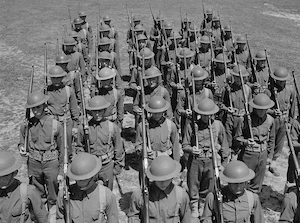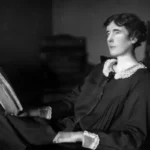As the US lacked critical intelligence during WWII, they utilized the nation’s libraries for spying and documentation.
In a time of national crisis, top security leaders turned to librarians for help.
Unlikely Heroes
It’s been nearly 80 years since the end of World War II. Today, we honor the legacy of those who served and sacrificed and remember the lessons learned during a dark time in global history. As libraries around the world face dangerous budget cuts, it feels timely to shed light on a lesser-known WWII security effort led by librarians at some of the United States’ largest libraries.

At a time when up-to-date information was critical, the US military did not have what they needed – largely in part to libraries and information centers going dangerously underfunded for years leading up to that point.
The investing of libraries became a national security issue. Military officials looked to scholars to fill in the gaps and, in true librarian fashion, they stepped up with limited resources. What came after was an exciting adventure full of espionage, bravery and reliance on our greatest resource – knowledge.
US Enters World War II
With war on the horizon, US President Franklin D. Roosevelt took precautionary steps to prepare for the inevitable. In early 1941, a slew of agency appointments took place. FDR tapped New York attorney politico William Donovan as the new leader of a new intelligence agency, a resurrection of US intelligence offices which shut down in 1929.

After diplomatically avoiding entering the war in Europe for two years, the United States officially declared war in December 1941, as a direct response to the bombing at the Pearl Harbor naval base. As the US prepared for war, Donovan went in search of answers.
Knowledge Crisis
After over a decade without intelligence offices, combined with steady decline in funding to libraries and information centers, Donovan faced an unfortunate truth – the US was lacking critical knowledge on all fronts. They were missing decades of updated cartography, statistics, and portfolios on the countries they’d be allying with and going up against.
In a rush to regroup, Donovan created the Research and Analysis (R&A) branch. He rounded up librarians and scholars from across the country and brought them to the New York Public Library. This served as their first outpost and new information hub. These researchers scoured the shelves of the library in search of information on a slew of topics – invasion strategies, military first aid, mapping and railway and munition research.
Scholars Head to Europe
After exhausting the information stored on the home front, Donovan created agents out of American librarians and professors and sent them to spy. They crossed enemy lines to smuggle important documents and books out of libraries across Europe. The agency set up OSS posts in many major cities, allowing scholars to deliver information discreetly and efficiently.

University of Chicago PhD, Adele Keibre, found herself in Gestapo-controlled Stockholm as R&A’s only female agent. After discovering other scholars in Europe using film cameras to record documents without taking them out of the building, she taught herself how to do the same. She was the agency’s most successful spy.
She smuggled over 3,000 rounds of film and roughly 20,000 documents a week to the US and London. By the end of 1942, R&A had delivered over 1.2 millions pages of intelligence to military officials and had expanded to almost 1,000 members. Today, the exact number of documents collected is still unknown due to the sheer scale of operations.
Post War Resolutions
By the end of the war in 1945, the immense contributions of Donovan’s agency was undeniable. During post-war reflections, American politicians praised the work of R&A and emphasized the importance of libraries. In the years after the war, major funding poured into libraries and research universities. Leaders overhauled slim budgets and installed ambitious programs. Politicians viewed investments in libraries as an investment in national security and the nation’s future.
In the 21st Century

It’s an old saying, “when you forget the past, you’re bound to repeat it.” It seems that after so much time, we’ve forgotten how vital the library system became on the way to an Allied victory. As libraries operate on thinner budgets each year, many have created the notion that libraries are obsolete. In reality, new technologies are targets for security attacks and are vulnerable to breakdown.
History has taught us that information infrastructure is vital for protecting national interests and connecting communities. Funding for libraries in the US accounts for less than 1% of government funding. It seems a small price to pay for a lesson learned.
Join our community of 1.5M readers
Like this story? You'll love our free weekly magazine.








